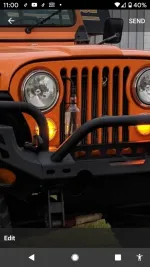More to the point would be why the coolant is blowing out to begin with?
After cleaning my system this past summer and filling radiator to correct level ~1" under full I have yet to get any overflow into my reservoir.
If you're constantly blowing coolant I'd suspect a head gasket failure or it's overfilled.
Running without a fan shroud?
No fan clutch or fan clutch blown.
Belts loose and slipping?
Coolant pump shot?
Electric aftermarket fan, relay, or thermostat not working?
P.O. re- routed the coolant lines wrong?
High coolant line causing an air-lock?
Aftermarket coolant circulator installed incorrectly?
Wrong/Failed thermostat?
Cold zone on the rad (running a rad blanket or cover?) freezing a small section?
Scaling from hard water?
Engine original or rebuilt? Cylinders bored much larger? Aftermarket Headers?
Elevation?
Coolant premixed or concentrated?
Using tap water or ionized water?
A few other things that might contribute to a boil over.
My rebuild is fresh, all new plumbing, heater core, rad, etc.
Still pukes a little now and then. That's what the reservoir is for. If your running hot from time to time ( heavy foot?) the overflow does its job.
If it's everytime you drive or even more often than not I agree you should eliminate potential problems.
Sent from my Pixel 2 using Tapatalk

